The whole concept of carsharing represents a change in behavior from the traditional "American" culture and lifestyle of car ownership. This shift in behavior can play out into several social, economic, and environmental impacts – some straightforward, some more speculative. The research recognizes that it is difficult to quantifiably measure behavior, but several studies and surveys attempt to do so.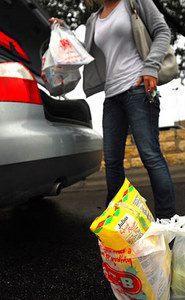
The most significant behavior change of carsharing members is a reduction in the number and length of trips. This is largely a function of changes in vehicle ownership: once members give up their cars, driving isn't always the default travel option. Other travel modes will be weighed, depending on cost, time, availability, or comfort. To carsharing members, driving may not always be most cost-effective option. "A carsharing system in effect transforms fixed costs of vehicle ownership into variable costs." (Shaheen, 1999) When a vehicle is purchased, the fixed costs – car payments, insurance – are treated as sunk costs by a household, and perceptions of the cost of a trip are based on variable costs – gasoline, parking – alone. The economics of driving are heavily skewed. (Millard-Ball, 2005) But because carsharing organizations charge for time and/or mileage, almost all costs become variable. Therefore, carsharing members "learn the true cost of driving" and subsequently drive less, translating into a reduction in VMT. (Shaheen, 2005) Several research studies show a reduction in VMT per member over time – possibly as they become more aware of the real costs of each trip. Carsharing members also tend to make more multi-purpose trips in order to use their time most efficiently, thereby reducing VMT. It is worthwhile to note, however, that carsharing can also induce VMT, as those members who didn't have access to vehicles before joining the carsharing organization now do. Despite this, the research supports a net reduction in VMT among all carsharing members. (Millard-Ball, 2005) Zipcar reports that on average, its members drove 5,295 miles per year prior to joining Zipcar, and currently, members drive an average of only 1,068 miles per year. (Zipcar, 2006)
Research and member surveys have also attempted to measure the secondary benefits of this change in travel behavior on transit and emissions. The overall reduction in VMT is realized partly as an increase in transit ridership, along with greater walking and cycling. According to a comprehensive member survey done by TRB in 2005, nearly 40% of members state that they use transit more often as a result of their involvement in carsharing. (Millard-Ball, 2005) Members of Zipcar in Washington, D.C. report a 46% increase in public transit trips, a 10% increase in bicycling trips, and a 25% increase in walking trips. (Washington Metro Area Transit Authority, 2005) Although carsharing increases transit ridership for some members, it is serving to substitute for transit trips previously taken by those members which did not have access to a car prior to joining. Furthermore, those members which have access to another vehicle in their household may be using that vehicle more intensely rather than using transit or other modes. (Sheehan et al, 2005)
Changes in travel behavior and patterns also translate into fewer emissions and less gasoline consumption. Although the decrease in VMT is clearly partly responsible, this reduction in emissions is also due to the fact that the majority of carsharing cars are newer, smaller, and usually fuel-efficient or alternative-fuel vehicles.
|
Can carsharing play a significant role in our region at lessening the capacity expansion requirements of parking and highway/roads? |
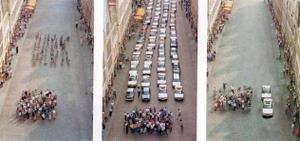
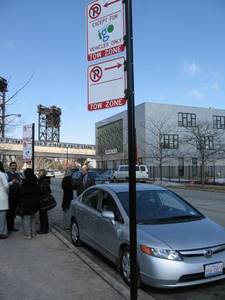

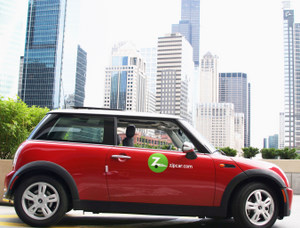 Inherent in the above two benefits of carsharing is the idea of cost savings. The reduction in vehicle ownership is likely due to the cost-saving aspects; and similarly, the reduction in VMT and associated increase in transit ridership and decrease in gasoline consumption are also tied to cost, as members "learn the true cost of driving."
Inherent in the above two benefits of carsharing is the idea of cost savings. The reduction in vehicle ownership is likely due to the cost-saving aspects; and similarly, the reduction in VMT and associated increase in transit ridership and decrease in gasoline consumption are also tied to cost, as members "learn the true cost of driving."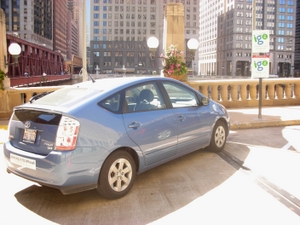 A significant benefit of this cost-savings is that is allows access and mobility to a larger demographic. Drivers who were not able to afford a vehicle of their own, because of the high fixed costs of purchasing the car, parking, registering, and insurance, are able to have access to carsharing vehicles. In this way, carsharing can promote equity and provide mobility to low-income groups. It offers an opportunity to have access to places not served by transit, flexibility in payment plans, and different vehicles for different purposes. This assumes that the carsharing cars are located in areas accessible to these members.
A significant benefit of this cost-savings is that is allows access and mobility to a larger demographic. Drivers who were not able to afford a vehicle of their own, because of the high fixed costs of purchasing the car, parking, registering, and insurance, are able to have access to carsharing vehicles. In this way, carsharing can promote equity and provide mobility to low-income groups. It offers an opportunity to have access to places not served by transit, flexibility in payment plans, and different vehicles for different purposes. This assumes that the carsharing cars are located in areas accessible to these members.